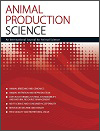Since the 19th century, when little was known about chemical composition of feeds, gross feed analysis for trade and estimating energetic contributions has been based on the Weende method (moisture, crude protein, crude fibre, ether extract, ash and nitrogen-free extract). A new, Armidale Method, is proposed here. It consists of 13 chemical categories based on modern knowledge of feed chemistry (moisture, true protein, nonprotein nitrogenous compounds, neutral and polar lipids, sugars, oligosaccharides, starch, pectin, lignin, hemicellulose, cellulose, and ash).
This paper belongs to Animal Science Reflections and Collection: Recent Advances in Animal Nutrition - Australia 2025.
AN24176 Abstract | AN24176 Full Text | AN24176PDF (290 KB) Open Access Article





